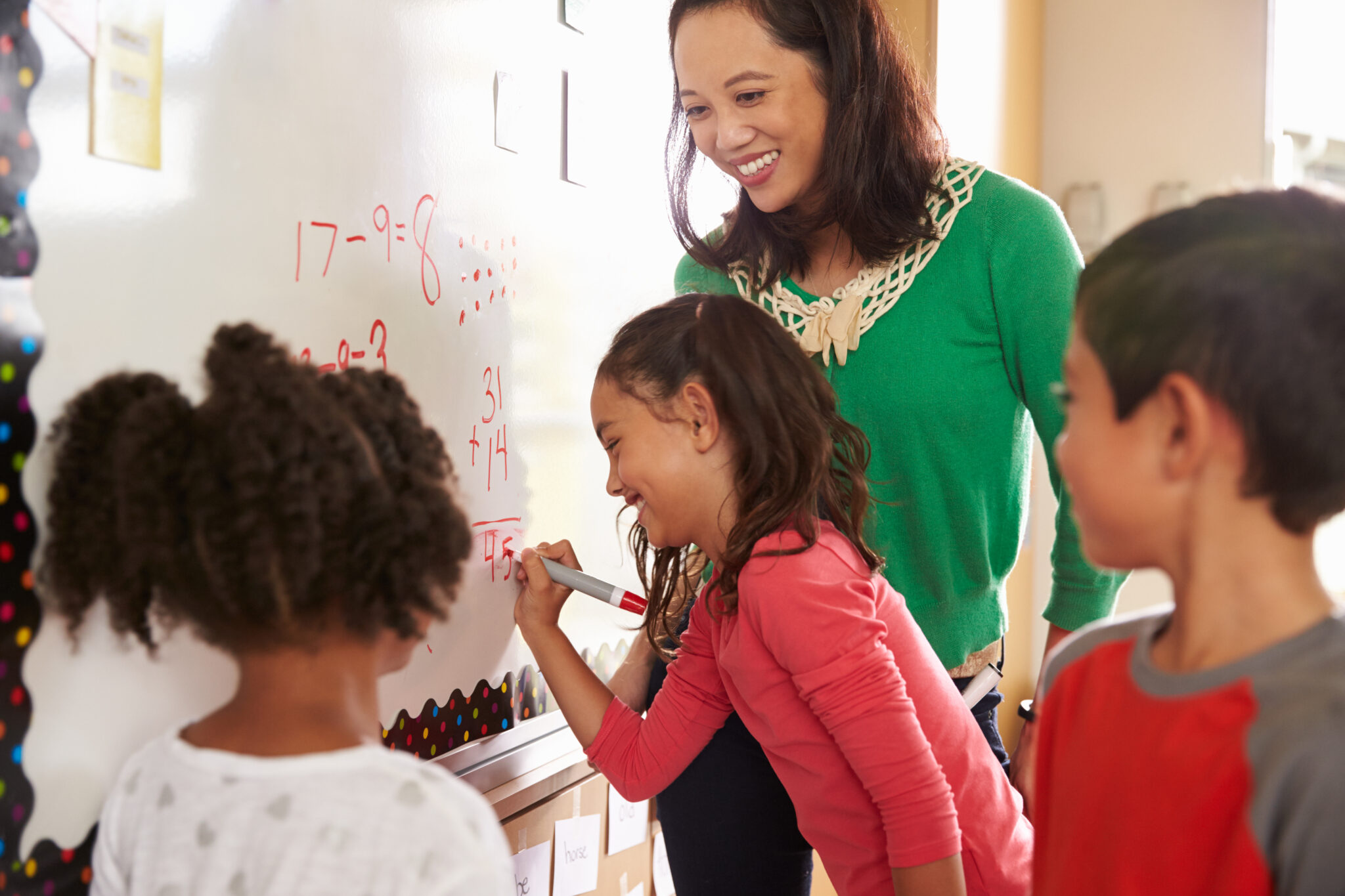School of Education, Johns Hopkins University
The COVID-19 pandemic initiated a significant pivot in PK-12 education. In response to wide-scale school closures in the spring of 2020, teachers and administrators everywhere rapidly acquired new technology skills and adapted to a new learning environment. While educators reconfigured face-to-face lessons for online instruction, and some used a new learning management system (LMS) for the first time, teacher observations and evaluations continued in many schools. However, administrators soon realized that typical observation tools were not an optimal match for virtual instruction, especially for those teachers who worked with students outside of general education classrooms. In a study that explored the experiences of elementary teachers of the gifted and district advanced academic coordinators during the first year of the pandemic, one challenge that participants discussed was the poor fit of available observation and evaluation instruments (Guilbault et al., 2022). The following case scenario reflects this challenge.
Ms. Figueroa teaches elementary gifted and talented (G/T) learners in an independent school district in Texas using a pull-out resource model. Before the COVID-19 pandemic, she met with identified gifted learners by grade level for a half-day each week to work on interest-based Type III projects following the Schoolwide Enrichment Model. When instruction moved online after initial school closings in March 2020, Ms. Figueroa’s service delivery model shifted. She spent less time in direct contact with G/T students and more time co-teaching virtual lessons in Language Arts with grade-level teachers. She also covered classes for colleagues who were out sick.
The principal, Dr. Jackson, logged in to Microsoft Teams to observe Ms. Figueroa co-teaching a lesson just a few weeks after remote instruction began. During the post-observation conference, Dr. Jackson stated, “I’ve highlighted certain components on this observation form that I’m looking for during remote instruction. Some behaviors will look different in a virtual lesson, and that’s okay, but we still want to see rigor and high levels of student engagement.” Ms. Figueroa, who had no virtual instruction experience before the COVID-19 pandemic, felt defeated.
As the scenario illustrates, during the COVID-19 pandemic, many G/T teachers like Ms. Figueroa needed feedback, flexibility, and time to develop their virtual instruction skills. Additionally, administrators like Dr. Jackson needed guidance and tools to conduct meaningful and constructive virtual observations, especially with resource teachers whose service delivery models differ from a general education setting. Unfortunately, many U.S. school administrators have limited training in gifted and talented education, making supporting their schools’ G/T educators challenging. According to the most recent National Association for Gifted Children (NAGC) State of the States in Gifted Education report (Rinn et al., 2022), only three states required basic training on the nature and needs of the gifted for administrators, one of which is Texas. To provide actionable feedback to teachers of the gifted working in a virtual environment, Texas principals need to understand the national standards in the field, best practices for teaching the gifted online, and the Texas State Plan for the Education of Gifted/Talented Students(Texas Education Agency, 2019).
This article briefly reviews best practices for teaching G/T learners using virtual instruction and conducting G/T classroom observations. The article also introduces a new set of observation checklists designed explicitly for virtual G/T instruction and describes how Texas school administrators can use these checklists to support their G/T educators.
Best Practices for Teaching Gifted and Talented Learners Online
The goals of gifted instruction are universal, regardless of learning modality. G/T students need daily academic challenges, time to work independently on their interests, opportunities to accelerate their learning, regular interactions with peers of similar ability, and differentiated instruction that meets their individual needs (Rogers, 2007). Virtual and hybrid instruction can meet these needs and increase G/T learners’ motivation, engagement, and sense of belonging (McKoy & Merry, 2023). Furthermore, gifted students enjoy online learning experiences (Periathiruvadi & Rinn, 2013; Potts, 2019).
Ensuring quality virtual and hybrid instruction for G/T students requires teachers to practice unique strategies and attributes. When planning instruction, teachers of G/T students can use online platforms and technology to incorporate 21st-century skills, such as communication, collaboration, creativity, and critical thinking into their lessons (McKoy & Merry, 2023). Teachers and school leaders seeking further guidance can consult the Technological Pedagogical Content Knowledge (TPACK; Mishra & Koehler, 2006) and Substitution-Augmentation-Modification-Redefinition (SAMR; Puentedura, 2006) frameworks. Additionally, teacher traits, such as clear communication, a student-centered teaching style, emotional warmth, organizational skills, and openness to using educational technology can enhance the success of virtual instruction (Black et al., 2009; Turk et al., 2022).
While instructional leaders’ awareness of best practices in G/T virtual and hybrid instruction is important, it is insufficient to ensure effective observations of G/T classrooms. Knowledge of these optimal instructional behaviors and dispositions must be a part of a comprehensive approach to classroom observation that includes appropriate tools, procedures, and observer competencies.
Best Practices for Conducting Observations of G/T Instruction
Classroom observers are valuable in providing G/T teachers with feedback on how effectively they meet students’ needs (Guilbault et al., 2023). While principals conduct observations as part of the teacher evaluation process, other leaders, including instructional coaches, may visit classrooms and provide non-evaluative feedback to further teachers’ professional growth. Regardless of the individual observing a G/T classroom, certain best practices can increase the efficacy of observations and help ensure that instruction meets gifted students’ needs.
To make observations a valuable professional development experience for G/T teachers, schools can adopt and use common G/T education language in observation tools and post-observation conferences, develop explicit training for anyone observing a G/T classroom, and collect objective evidence of classroom practice that is free from bias (Guilbault et al., 2023). In addition, it is important that observers clearly understand the differences between ideal pedagogical practices in gifted and general education classrooms and tailor their observation procedures and instruments accordingly (Farah & Chandler, 2018; Peters & Gates, 2010). Unfortunately, many district- or school-approved observation scales are a better fit for general education classrooms than for gifted education classrooms, and available gifted education observation instruments do not reflect the unique attributes of virtual learning environments (Guilbault et al., 2023). As such, there is a clear need for an observation rubric that supports effective virtual G/T classroom observations.
The PIVOT G/T Teacher Observation Checklists
To address the need for G/T virtual lesson observation tools, faculty at Johns Hopkins University developed checklists to supplement existing district observation forms. The PIVOT (Perception of Instruction in Virtual/Online Teaching) checklists (Guilbault, 2022) include observation forms with criteria for best practices in four domains of teaching: (a) Planning, (b) Learning Environment, (c) Instruction, and (d) Professionalism and Reflection. A review of the literature on best practices in online teaching and learning and gifted education informed the initial version of the checklists. A team of four content experts with administration experience in gifted education provided feedback regarding the relevancy and clarity of items in the initial checklists. To ensure content validity, a group of administrators, G/T resource teachers, university faculty, and gifted education coordinators completed a survey in which they rated items on a 3-point Likert scale as follows: (1) not necessary, (2) useful but not essential, and (3) essential. The survey responses guided the removal or revision of specific checklist items. Educators taking graduate courses in gifted education pilot-tested the final versions of the checklists.
Feedback from the content experts involved in developing the PIVOT checklists informed the alignment of the checklists with frequently referenced measures of instructional quality. Alignment between the PIVOT domains, the 2019 NAGC-CEC PreK-Grade 12 Gifted Programming Standards (Corwith et al., 2019), the Danielson Framework for Teaching (Danielson, 2013), and the Marzano Art and Science of Teaching Framework (Marzano, 2011) appears in Figure 1. Teaching behaviors on the four checklists reflect Texas State Plan goals and objectives under (a) Service Design, (b) Curriculum and Instruction, and (c) Professional Learning.
Figure 1
PIVOT Domain Alignment with Teacher Observation Frameworks and National Standards
| PIVOT Domain | National Association for Gifted Children (NAGC) Standards | Danielson Framework | Marzano | |||||||||||
| •Learning & Development •Assessment •Curriculum & Instruction •Learning Environments •Programming •Professional Learning | •Planning & Preparation •The Classroom Environment •Instruction •Professional Responsibilities | •Classroom Strategies & Behaviors •Planning & Preparing •Reflecting on Teaching •Collegiality & Professionalism | ||||||||||||
| 1 | 2 | 3 | 4 | 5 | 6 | 1 | 2 | 3 | 4 | 1 | 2 | 3 | 4 | |
| Planning | X | X | X | X | X | X | ||||||||
| Learning Environment | X | X | X | |||||||||||
| Instruction | X | X | X | X | X | X | ||||||||
| Professionalism and Reflection | X | X | X | X | ||||||||||
Note. The 2019 NAGC-CEC Pre-K to Grade 12 Gifted Programming Standards were used since the NAGC-CEC Teacher Preparation Standards were under revision.
The PIVOT checklists (Guilbault, 2022) are available as a free download from the Open Science Framework at https://osf.io/3s7xn/. These checklists are a helpful guide for administrators, mentor teachers, instructional coaches, and educators who want to use research-based practices in their virtual or hybrid lessons with gifted and talented students. Some ways educators may choose to use the checklists include:
- As a guide for conducting brief, virtual classroom walk-throughs
- As a rubric for formal or informal observations
- As a guide for teacher self-assessment and reflection
- As evidence upon which to base a coaching or mentoring cycle
- As a guide for peer-to-peer classroom observation or a Lesson Study inquiry cycle
- To identify team-level or school-wide focus areas for targeted professional learning
The Texas State Plan (Texas Education Agency, 2019) highlights the following state goal for services for G/T students:
Students who participate in services designed for gifted/talented students will demonstrate skills in self-directed learning, thinking, research, and communication as evidenced by the development of innovative products and performances that reflect individuality and creativity and are advanced in relation to students of similar age, experience, or environment. (p. 1).
The PIVOT checklists can help administrators, instructional coaches, and teachers of the gifted to ensure their schools’ virtual and hybrid offerings help students develop the academic skills deemed essential by the Texas Education Agency.
Conclusion
Today, most students have returned to full-time, in-person learning; however, many opt to spend at least some time in virtual school options. Many teachers gained substantial educational technology training in just a few short months. These educators are eager to continue implementing the blended and hybrid learning activities they perfected during the last few years. Rather than abandon all of these new technology skills, teachers and administrators are embracing ways to integrate virtual or blended instruction in schools; therefore, tools such as the PIVOT checklists are helpful supplemental resources for educators and administrators.
Farah and Chandler (2018) addressed the complex interaction between teachers and students as part of the teaching and learning process, stating that “For continuous improvement of this interaction within a classroom, educators and administrators need to employ accurate assessments of instruction measured against clear standards, which must be aligned with effective practices” (p. 276). Using the PIVOT checklists increases the efficacy of the observation, evaluation, and feedback cycle for virtual or hybrid learning environments. As gifted education moves into the post-pandemic era, virtual and hybrid instruction will continue to be a part of many G/T students’ learning experiences. The PIVOT checklists provide clear criteria for educators seeking to ensure they deliver valuable and effective instruction to G/T learners.
Recommended Resources
Puentedura, R. R. (2015). SAMR: A Brief Introduction. http://hippasus.com/rrpweblog/archives/2015/10/SAMR_ABriefIntro.pdf
Koehler, M. J. (2023). TPACK.org. http://www.tpack.org/
References
Black, E., DiPietro, M., Ferdig, R., & Polling, N. (2009). Developing a survey to measure best practices of K-12 online instructors. Online Journal of Distance Learning Administration, 7(1), 1-20. https://ojdla.com/archive/spring121/black121.pdf
Farah, Y. N., & Chandler, K. L. (2018). Structured observation instruments assessing instructional practices with gifted and talented students: A review of the literature. Gifted Child Quarterly, 62(3), 276-288. https://doi.org/10.1177/0016986218758439
Guilbault, K. M. (2022, June). PIVOT teacher of the gifted observation scales: Perception of instruction in virtual/online teaching. https://osf.io/3s7xn/
Guilbault, K. M., Chandler, K., L., & Caroleo, S. (2023). Supervision and observation in the gifted education classroom. In A. Lavigne & M. L. Derrington, (Eds.), Actionable feedback for PK-12 teachers: Supervising within academic domains and program areas (pp. 149 – 162). Rowman & Littlefield.
Guilbault, K. M., JohnBull, R. M., & McCormick, K. M. (2022). District gifted education coordinators’ leadership roles and experiences during the COVID-19 pandemic. Journal for the Education of the Gifted, 45(4), 352-380. https://doi.org/10.1177/01623532221124144
McKoy, S., & Merry, K. E. (2023). Engaging advanced learners with differentiated online learning. Gifted Child Today, 46(1), 48–56. https://doi.org/10.1177/10762175221131068
Mishra, P., & Koehler, M. J. (2006). Technological pedagogical content knowledge: A framework for teacher knowledge. Teachers College Record, 108(6), 1017–1054. https://doi.org/10.1111/j.1467-9620.2006.00684.x
National Association for Gifted Children. (2019). 2019 Pre-K-grade 12 gifted programming standards. https://cdn.ymaws.com/nagc.org/resource/resmgr/knowledge-center/nagc_2019_prek-grade_12_gift.pdf
Periathiruvadi, S., & Rinn, A. N. (2013). Technology in gifted education: A review of best practices and empirical research. Journal of Research on Technology in Education, 45(2), 153–169. https://eric.ed.gov/?id=EJ991843
Peters, S. J., & Gates, J.C. (2010). The teacher observation form: Revisions and updates. Gifted Child Quarterly, 54(3), 179-88. https://doi.org/10.1177/0016986210369258
Potts, J. A. (2019). Profoundly gifted students’ perceptions of virtual classrooms. Gifted Child Quarterly, 63(1), 58–80. https://doi.org/10.1177/0016986218801075
Puentedura, R. R. (2006). Transformation, technology, and education. http://hippasus.com/resources/tte/puentedura_tte.pdf
Rinn, A. N., Mun, R. U., & Hodges, J. (2022). 2020-2021 State of the States in gifted education. National Association for Gifted Children and the Council of State Directors of Programs for the Gifted. https://cdn.ymaws.com/nagc.org/resource/resmgr/2020-21_state_of_the_states_.pdf
Rogers, K. B. (2007). Lessons learned about educating the gifted and talented: A synthesis of the research on educational practice. Gifted Child Quarterly, 51(4), 382–396. https://doi.org/10.1177/0016986207306324
Texas Education Agency. (2019). Texas state plan for the education of gifted/talented students. https://tea.texas.gov/Academics/Special_Student_Populations/Gifted_and_Talented_Education/Gifted_Talented_Education
Turk, M., Heddy, B. C., & Danielson, R. W. (2022). Teaching and social presences supporting basic needs satisfaction in online learning environments: How can presences and basic needs happily meet online? Computers & Education, 180(3-4), 104432. https://doi.org/10.1016/j.compedu.2022.104432
Using the PIVOT G/T Teacher Observation Checklists for Virtual or Hybrid Lessons PDF







